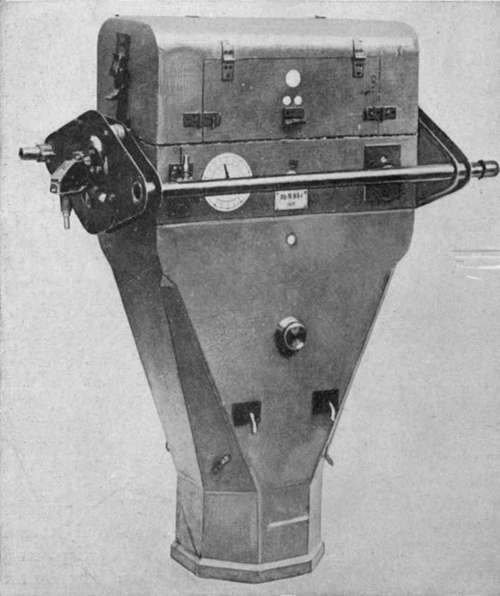Distortions Produced By The Focal Plane Shutter
Description
This section is from the book "Airplane Photography", by Herbert E. Ives. Also available from Amazon: Airplane photography.
Distortions Produced By The Focal Plane Shutter
While the time of exposure of any point on the plate can, with the focal-plane shutter, easily be made two second or less, the whole period during which the shutter is moving is much greater than this. For instance, a 1 centimeter opening which gives two second exposure takes to second to move across a 10 centimeter plate, or nearly -5- second for an 18 centimeter plate. With a moving airplane this means that the point of view at the end of the exposure has moved forward compared to that at the beginning, by the amount of motion of the plane in the interval. If the shutter moves in the direction of motion of the plane the image will be magnified; if in the opposite direction, it will be compressed along the axis of motion. The amount of this distortion is calculated as follows:
Let the velocity of the plane be V, and that of the shutter be v. Let the focal length of the camera be F, and the altitude A. If the camera were stationary, a plate of length I would receive on its surface an image corresponding to a distance pXl on the ground. Due to the motion of the shutter the end of the exposure occurs at a time after the start. In this time the plane has moved a distance F X~» hence the point photographed at the end of the shutter travel is — within or beyond the original space covered by the plate, depending on the direction of motion of the curtain. The distortion, Z), is given by the ratio of this distance to the length corresponding to the normal stationary field of view:
When F = 200 kilometers per hour, # = 100 centimeters per second, F = 50 centimeters, ^4=3000 meters, we have—
20,000,000 X 50 . 1
D = 36ooxioox3oo,ooo = aPProximately loo Or if the actual distance error on the ground is desired, — = 10.8 meters.
As a percentage error this one per cent, is small compared with other uncertainties, such as film shrinkage or the error of level of the camera. As an absolute error in surveying, thirty feet is, of course, excessive.
The distortion is diminished for any specified shutter speed by making the speed of travel of the curtain as large as possible and by correspondingly increasing the aperture. In connection with film cameras, another solution which has been suggested is to move the film continuously during the exposure in the direction of the plane's motion. The requisite speed of the film vf to eliminate distortion is given by the relation: v'. F V A.
For the values of V9 F, and A used above, v' = .92 centimeters per second. This speed is clearly that which holds the image stationary on the film—a fact which suggests another object for such movement, namely, to permit of longer exposures.
The effect of focal plane distortion may be averaged out in the making of strip maps, if the shutter is constructed so as to move in opposite directions on successive exposures. The first picture will be magnified, the second compressed, and so on, but a strip formed of accurately juxtaposed pictures will be substantially accurate in over-all length. Such a shutter is embodied in one of the German film cameras (Fig. 61).
Distortion of the kind above discussed is absent with between-the-lens shutters, which may conceivably be improved in efficiency and in feasible size. If so they would merit serious consideration for aerial mapping.

Fig. 61. - German automatic film camera.
Continue to:
- prev: Characteristics Of The Focal Plane Shutter
- Table of Contents
- next: Methods And Apparatus For Testing Shutter Performance
Tags
camera, lens, airplane, aerial, film, exposure, photography, maps, birdseye
